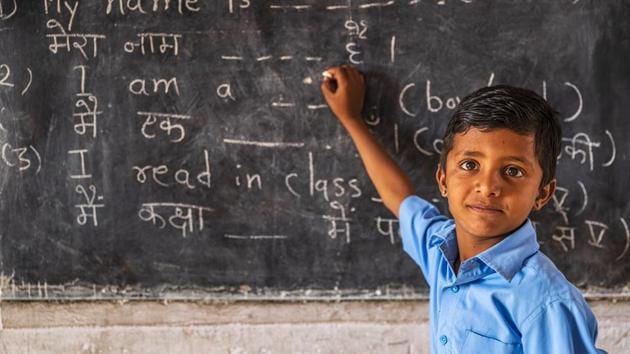Advantages of learning different languages are many, shows research
Research shows that the advantages of learning different languages are many, especially in today’s world
In India, we often make tall claims of being the most multilingual society in the world with more than a thousand living languages. Peoples Linguistic Survey of India led by the noted linguist Ganesh Devy has also identified 780 languages in a survey carried out between 2010 and 2012. Interestingly, seldom do we realize that probably the highest mortality rate in case of languages can also be seen in India. Let alone mourning,rarely are these deaths of languages noticed.

It’s only for theorist and academics that language if it is closely associated with another discipline, it is culture. But in the kind of world we live today, it is more politics than culture that gets first association with language. Positioning Sanskrit and Urdu on two ends of acontinuum is one of the biggest tragedies of our times. And amidst these politics of identities that is played using languages, many languages spoken by smaller groups of people vanish from public memory without traces. People are not even remorseful as they are equipped with a language called English to make them feel belonged to larger globalized society.
No doubt English remains an aspirational language for many people and has been so for long. However,the problem is not with the language of English, it is with the association that people make of it with social and economic upward mobility. Even that is not a problem if they are not insistent on sacrificing their mother tongues in seeking and making themselves authentic sounding in English.
This brings us to the most sensational of debates – the medium of instruction in schools. We are caught between a bipolar option of either all instruction in English or all instruction in regional language. The ‘immersion model’ of bilingual education is essentially monolingual as children are taught all courses (subjects) in English with one small text introducing the regional language as if for the sake of courtesy! Naturally, the affinity of the child over a period of time is to think and speak in English, the only language that he/she can use for deciphering the world around.
Studies are being carried out to find out if the earlier bilingual teaching-learning methods of developmental model or transitional model where children studied for most part of the schooling (say up to grade 5 or 7) in mother tongues and then moved slowly into English as a medium of instruction have been more effective. Primary evidence is that those who have gone through such models of bilingual education are better bilinguals–proficient in both the languages – than those coming out of the immersion model where everything is taught in English to students since early childhood.
Europe, which also credits itself of being a multilingual region in the world has been taking stock of situation and encouraging multiple language learning. Interestingly, they have also developed and are experimenting with newer models like that of Content and Language Integrated Learning (CLIL) – teaching language through content. In this model, they make an effort to teach different courses in two different languages in schools. For example, a school in Spain teaches some course in Spanish and a few in English or French or other. This means, the academic language of child is chiselled in two languages simultaneously.
It is not much different from the earlier Kendriya Vidyalaya (KV) model where some courses were taught in English and some in Hindi. If only Hindi can be replaced by regional languages, this model can be emulated in other regions of the country thus saving both English and the regional language instead of creating conflict of who’s the winner – the regional language or English. Of course, there is more to CLIL than just teaching two languages simultaneously. It is about the way two languages are taught, the creativity on part of the teacher while they are taught, methods like co-teaching by teachers of subject (math and science) and languages. Europeans are found to be very careful in introducing a language that is non-native for a child. We in India seem to have no qualms forcing our little children to memorise content and call it ‘by-heart’!
Now, the debate could be which subjects/courses could be taught in English and in regional languages? Interestingly, it was foundthatinoneoftheschoolsin Italy that the research team visited, the teacher said, “parents feel subjects like math and science are far too important to be taught in any other language than mother tongue”. Probably, an ideal we never thought through while making our policies. We have for long taken mother tongues for granted. It is mainly because we do not make purity demands on any language that we know. As far as a person is able to converse in mother tongue we understand that she knows it. We should realize that articulation of written content, of academic content in that language and making it a thinking language is equally important.
There are many studies showing importance and advantages of fundamentals learning in mother tongues. There are equally good number of studies that show that children have such cognitive abilities that they can easily learn four languages when young. If only we can give heed to such scientific findings and find alternative models of bilingual education can we keep away the politics of language that does nothing more than creating hatred for another language, another culture. All languages are beautiful collective creations. A recognition of the fact that human mind has ability to comprehend more than one of them can make us seek more of them… save them.
(The author is Head of Department of European Studies, Manipal Academy of Higher Education, Manipal)












